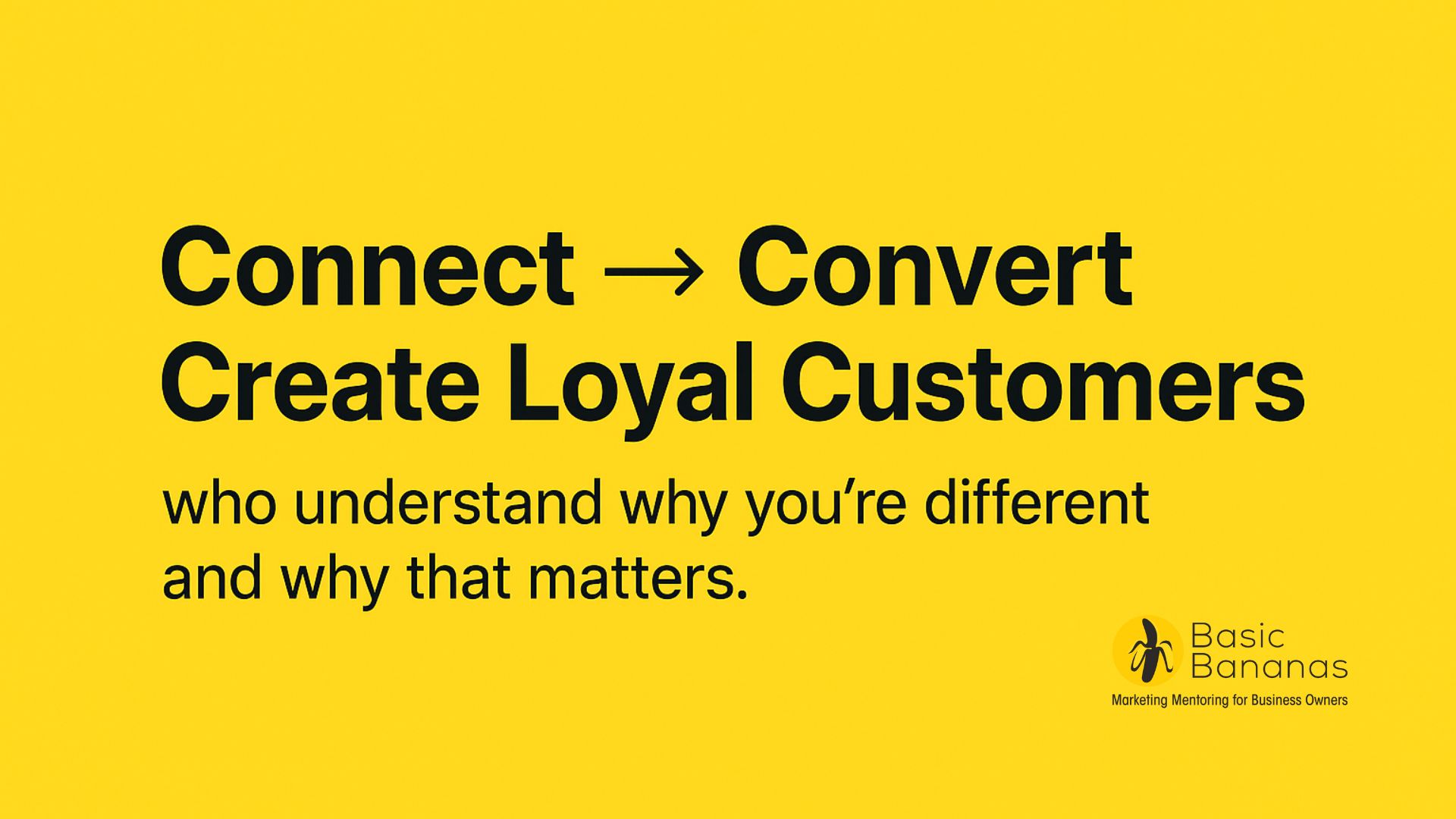Marketing isn’t a single trick. It’s an ecosystem. When your website, emails, content and client care all harmonise, your business becomes memorable, trusted, and sellable. Let’s make it fun (and actually useful).

Why a Marketing Ecosystem? (Short answer: alignment)
5 Foundations of a Thriving Marketing Ecosystem
1. Differentiate or disappear
If your brand sounds like everyone else, it becomes vanilla: forgettable. Differentiation isn’t being louder; it’s being clearer. At the heart of that clarity is your Unique Value Proposition (UVP): the one thing you do better or differently.
- “Next-day delivery Australia-wide” (product-based)
- “We respond to every client enquiry within 24 hours” (service-based)
- “Australia’s only eco-friendly bookkeeping service for wellness brands.”
Ask yourself: Who exactly am I talking to? What problem am I solving for them? What makes my solution uniquely valuable?
2. Use your customer’s language
“The purpose of marketing is to open the door so people see you.” But if that door looks like every other door, they’ll walk past. Use the words your customers use in emails, DMs and reviews. It builds instant trust.
3. Open multiple doors (not just one)
Relying on one channel (hi, Instagram) is risky. A marketing ecosystem creates multiple entry points:
- Website (your home base)
- Email list (own the convo)
- Referrals & partnerships (social proof)
- Local SEO & Google Business Profile (visibility in Australia/local search)
- Events, podcasts, or local collabs
Start with three: one digital, one local, one content-based. Make each lead to one obvious next step.
4. Build conversion into every step
Attraction without conversion is like switching on a tap into a leaky bucket. Decide what you want people to do next and make it painfully easy. Even tiny changes (better headline, clearer CTA, simpler checkout) can double conversions.
- “Show me how”
- “Let’s get started”
- “Yes, I’m in!”
- “Book your spot today”
5. You are your brand’s most valuable resource
No one understands your business better than you. Your story, your why, and your values give your brand a heartbeat that no ad can fake. Write your brand essence in one line. If you can’t say it clearly, your audience won’t hear it.
Example: a nutritionist who healed themselves, a tradie who started to support family and community. That’s trust. That’s the good stuff.
Shift to the Feeling: Speak to Pain Points
Don’t just list features. Describe life after buying. You’re not selling a mattress. You’re selling better sleep. You’re not selling physiotherapy. You’re selling the freedom to move again.
Audit your website: for every product mention, ask “what feeling does this create?” Shift copy toward that feeling and watch browsers become buyers.

Here’s the Easiest Way to Make All Your Marketing Work Together
Start with three things this week:
- Pick one clear offer (what you want people to buy or book).
- Choose three doors: website + local listing + content (blog/IG/podcast).
- Fix one friction point (CTA, headline, checkout step).
Do this for 8 weeks and you’ll have real signals. More leads, clearer messaging and fewer “what ifs.”
FAQs
- What is a marketing ecosystem?
- A marketing ecosystem is the connected system of all your marketing touch points (like your website, social media, email, ads, and community) working together to attract and convert clients.
- How do I know if my marketing is working?
- Track leads, conversions, and returning customers. If people find you easily and understand what you offer, your ecosystem is aligned.
- What’s the biggest mistake small businesses make?
- Relying on one channel (usually social media) and ignoring website optimisation, SEO, and follow-up systems.
- How often should I update my website?
- Review every 6 to 12 months to ensure your messaging, visuals, and CTAs still match your brand direction.
- What if I don’t have time for marketing?
- Start small: one clear offer, one platform, one action each week. Consistency beats intensity every time.